N(4)-hydroxycytidine
Synonym(s):NHC;BHC;1-((2R,3R,4S,5R)-3,4-Dihydroxy-5-(hydroxymethyl)tetrahydrofuran-2-yl)-4-(hydroxyamino)pyrimidin-2(1H)-one;N4-Hydroxycytidine;N4OHcyd
- CAS NO.:3258-02-4
- Empirical Formula: C9H13N3O6
- Molecular Weight: 259.22
- MDL number: MFCD01675695
- SAFETY DATA SHEET (SDS)
- Update Date: 2024-11-20 11:41:24
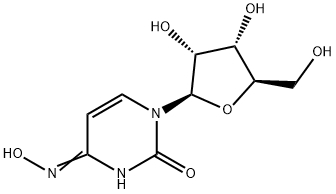
What is N(4)-hydroxycytidine?
Description
EIDD-1931 is a ribonucleoside analog with antiviral activity. It inhibits replication of severe acute respiratory syndrome coronavirus (SARS-CoV) in Vero 76 cells, Middle East respiratory syndrome coronavirus (MERS-CoV) in Calu-3 2B4 cells, and SARS-CoV-2 in Vero cells (IC50s =0.1, 0.15 and 0.3 μM, respectively). It also reduces viral titers of Venezuelan equine encephalitis virus (VEEV) TC-83 in infected Vero cells (EC50 = 0.426 μM) and wild-type and remdesivir-resistant strains of the model CoV mouse hepatitis virus (MHV) in infected DBT cells. EIDD-1931 (100 and 400 mg/kg twice per day) reduces lung viral titers in mouse models of respiratory syncytial virus (RSV) and H1N1 influenza A virus infection.
The Uses of N(4)-hydroxycytidine
EIDD 1931 is an orally bioavailable broad-spectrum antiviral that inhibits SARS-CoV-2 and other multiple endemic, epidemic and bat coronavirus and has the potential for seasonal and pandemic influenza treatment. A broad-spectrum ribonucleoside analog inhibitor of influenza and respiratory syncytial viruses.
Definition
ChEBI: N(4)-hydroxycytidine is a nucleoside analogue that is cytidine which carries a hydroxy group at the N(4)-positon. It has broad-spectrum antiviral activity against influenza, SARS-CoV , SARS-CoV-2 and MERS-CoV. It has a role as a drug metabolite, a human xenobiotic metabolite, an anticoronaviral agent and an antiviral agent. It is a nucleoside analogue and a ketoxime. It is functionally related to a cytidine.
storage
Store at -20°C
References
1) Janion and Glickman (1980),?N4-hydroxycytidine: a mutagen specific for AT to GC transitions;?Mutat. Res.,?72?43 2) Stuyver?et al.?(2003),?Ribonucleotide analogue that blocks replication of bovine viral diarrhea and hepatitis C viruses in culture; Antimicrob. Agents Chemother.,?47?244 3) Costantini?et al.?(2012),?Antiviral activity of nucleoside analogues against norovirus; Antivir. Ther.,?17?981 4) Reynard?et al.?(2015),?Identification of a New Ribonucleoside Inhibitor of Ebola Virus Replication; Viruses,?7?6233 5) Ehteshami?et al.?(2017),?Characterization of ?-D-N4-Hydroxycytidine as a Novel Inhibitor of Chikungunya Virus; Antimicrob. Agents Chemother.,?61?e02395-16 6) Yoon?et al.?(2018),?Orally efficacious broad-spectrum ribonucleoside analog inhibitor of influenza and respiratory syncytial viruses; Antimicrob. Agents Chemother.,?62?e00766-18 7) Barnard?et al.?(2004),?Inhibition of severe acute respiratory syndrome-associated coronavirus (SARSCoV) by calpain inhibitors and beta-D-N4-hydroxycytidine; Antivir. Chem. Chemother., 15 15 8) Pyrc et al. (2006),?Inhibition of human coronavirus NL63 infection at early stages of the replication cycle; Antimicrob. Agents Chemother.,?50?2000 9) Toots et al. (2019),?Characterization of orally efficacious influenza drug with high resistance barrier in ferrets and human airway epithelia; Sci. Transl. Med.,?11?eaax5866
Properties of N(4)-hydroxycytidine
| Melting point: | 169-172 °C(Solv: methanol (67-56-1)) |
| Density | 1.93±0.1 g/cm3(Predicted) |
| storage temp. | Inert atmosphere,Store in freezer, under -20°C |
| solubility | Soluble in DMSO (up to 25 mg/ml) or in Water (up to 15 mg/ml with warming). |
| form | solid |
| pka | 8.19±0.20(Predicted) |
| color | White |
| Stability: | Stable for 1 year from date of purchase as supplied. Solutions in DMSO or distilled water may be stored at -20° for up to 3 months. |
Safety information for N(4)-hydroxycytidine
| Signal word | Warning |
| Pictogram(s) |
 Exclamation Mark Irritant GHS07 |
| GHS Hazard Statements |
H302:Acute toxicity,oral H315:Skin corrosion/irritation H319:Serious eye damage/eye irritation H335:Specific target organ toxicity, single exposure;Respiratory tract irritation |
| Precautionary Statement Codes |
P261:Avoid breathing dust/fume/gas/mist/vapours/spray. P264:Wash hands thoroughly after handling. P264:Wash skin thouroughly after handling. P271:Use only outdoors or in a well-ventilated area. P280:Wear protective gloves/protective clothing/eye protection/face protection. P312:Call a POISON CENTER or doctor/physician if you feel unwell. P362:Take off contaminated clothing and wash before reuse. P302+P352:IF ON SKIN: wash with plenty of soap and water. P304+P340:IF INHALED: Remove victim to fresh air and Keep at rest in a position comfortable for breathing. P305+P351+P338:IF IN EYES: Rinse cautiously with water for several minutes. Remove contact lenses, if present and easy to do. Continuerinsing. P332+P313:IF SKIN irritation occurs: Get medical advice/attention. P337+P313:IF eye irritation persists: Get medical advice/attention. P405:Store locked up. P403+P233:Store in a well-ventilated place. Keep container tightly closed. P501:Dispose of contents/container to..… |
Computed Descriptors for N(4)-hydroxycytidine
N(4)-hydroxycytidine manufacturer
Biochemical and Synthetic Products PvtLtd
New Products
Tert-butyl bis(2-chloroethyl)carbamate (S)-3-Aminobutanenitrile hydrochloride N-Boc-D-alaninol N-BOC-D/L-ALANINOL N-octanoyl benzotriazole 4-Hydrazinobenzoic acid 3,4-Dibenzyloxybenzaldehyde 1,1’-CARBONYLDIIMIDAZOLE R-2-BENZYLOXY PROPIONIC ACID 1,1’-CARBONYLDI (1,2-4 TRIAZOLE) 4-HYDROXY BENZYL ALCOHOL 3-NITRO-2-METHYL ANILINE (2-Hydroxyphenyl)acetonitrile 4-Bromopyrazole 5-BROMO-2CYANO PYRIDINE 5,6-Dimethoxyindanone 5-broMo-2-chloro-N-cyclopentylpyriMidin-4-aMine 4-methoxy-3,5-dinitropyridine 2-(Cyanocyclohexyl)acetic acid 2-aminopropyl benzoate hydrochloride 1-(4-(aminomethyl)benzyl)urea hydrochloride tert-butyl 4- (ureidomethyl)benzylcarbamate diethyl 2-(2-((tertbutoxycarbonyl)amino) ethyl)malonate Ethyl-2-chloro((4-methoxyphenyl)hydrazono)acetateRelated products of tetrahydrofuran

![1-[3,4-dihydroxy-5-(hydroxymethyl)oxolan-2-yl]-4-(hydroxyamino)pyrimidin-2-one](https://img.chemicalbook.in/CAS/20180528/GIF/13491-41-3.gif)
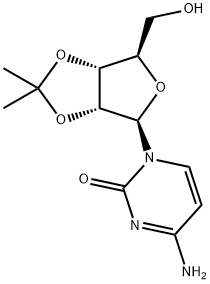
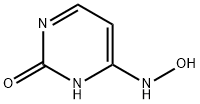
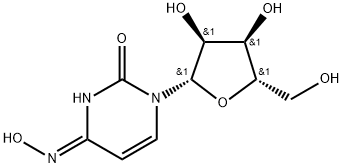
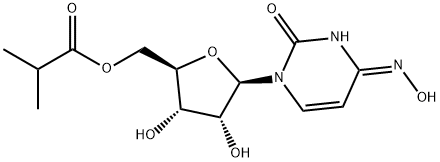
![((3aR,4R,6R,6aR)-6-((E)-4-(hydroxyimino)-2-oxo-3,4-dihydropyrimidin-1(2H)-yl)-2,2-dimethyltetrahydrofuro[3,4-d][1,3]dioxol-4-yl)methyl isobutyrate](https://img.chemicalbook.in/CAS/20210111/GIF/2346620-55-9.gif)
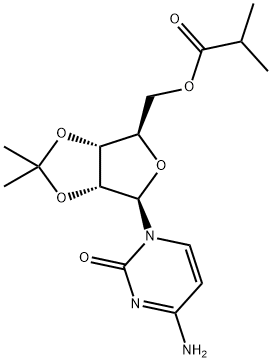
You may like
-
 N4 Hydroxycytidine 3258-02-4 99%View Details
N4 Hydroxycytidine 3258-02-4 99%View Details
3258-02-4 -
 EIDD-1931 CAS 3258-02-4View Details
EIDD-1931 CAS 3258-02-4View Details
3258-02-4 -
 55441-95-7 99%View Details
55441-95-7 99%View Details
55441-95-7 -
 N-Vinylformamide 99%View Details
N-Vinylformamide 99%View Details
13162-05-5 -
 Chloro Uracil 1820-81-1 99%View Details
Chloro Uracil 1820-81-1 99%View Details
1820-81-1 -
 2-ethyl-6-methyl-3-hydroxypyridine succinate 99%View Details
2-ethyl-6-methyl-3-hydroxypyridine succinate 99%View Details
127464-43-1 -
 2-ETHYLPYRIDINE 100-71-0 99%View Details
2-ETHYLPYRIDINE 100-71-0 99%View Details
100-71-0 -
 181228-33-1 (S)-Methyl 3-amino-2-((tert-butoxycarbonyl)amino)propanote Hydrochloride (DAP-OMe. HCl) 99%View Details
181228-33-1 (S)-Methyl 3-amino-2-((tert-butoxycarbonyl)amino)propanote Hydrochloride (DAP-OMe. HCl) 99%View Details
181228-33-1